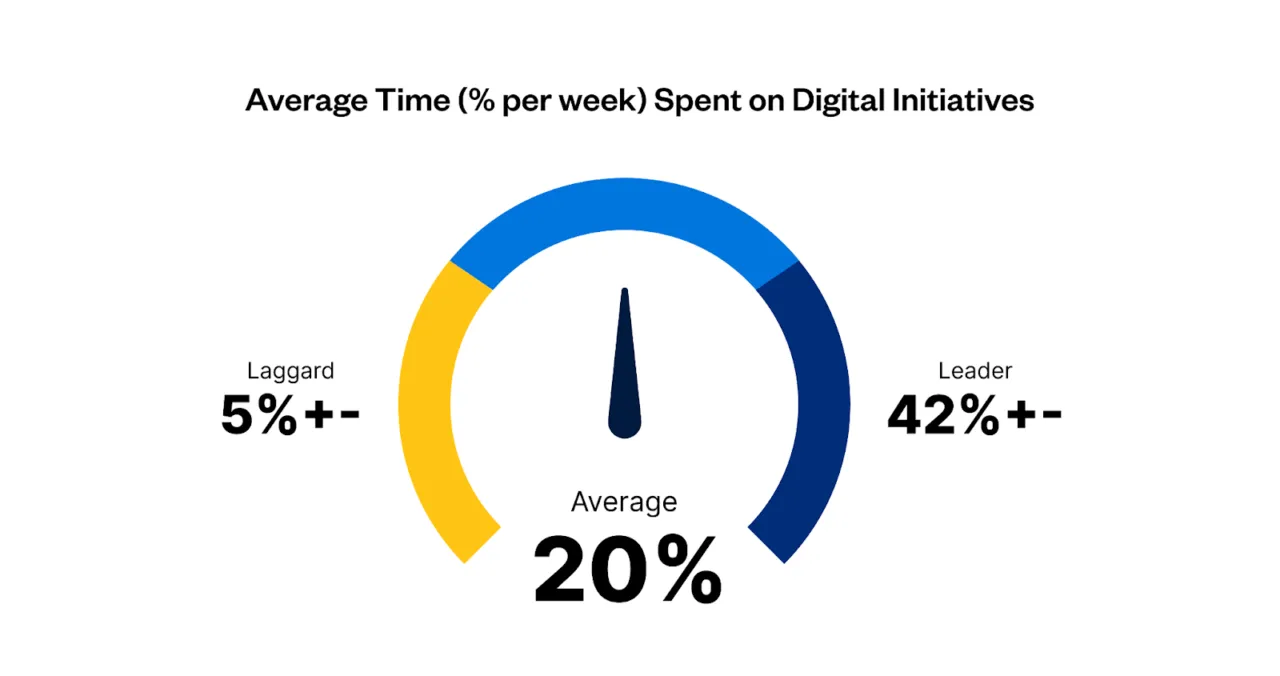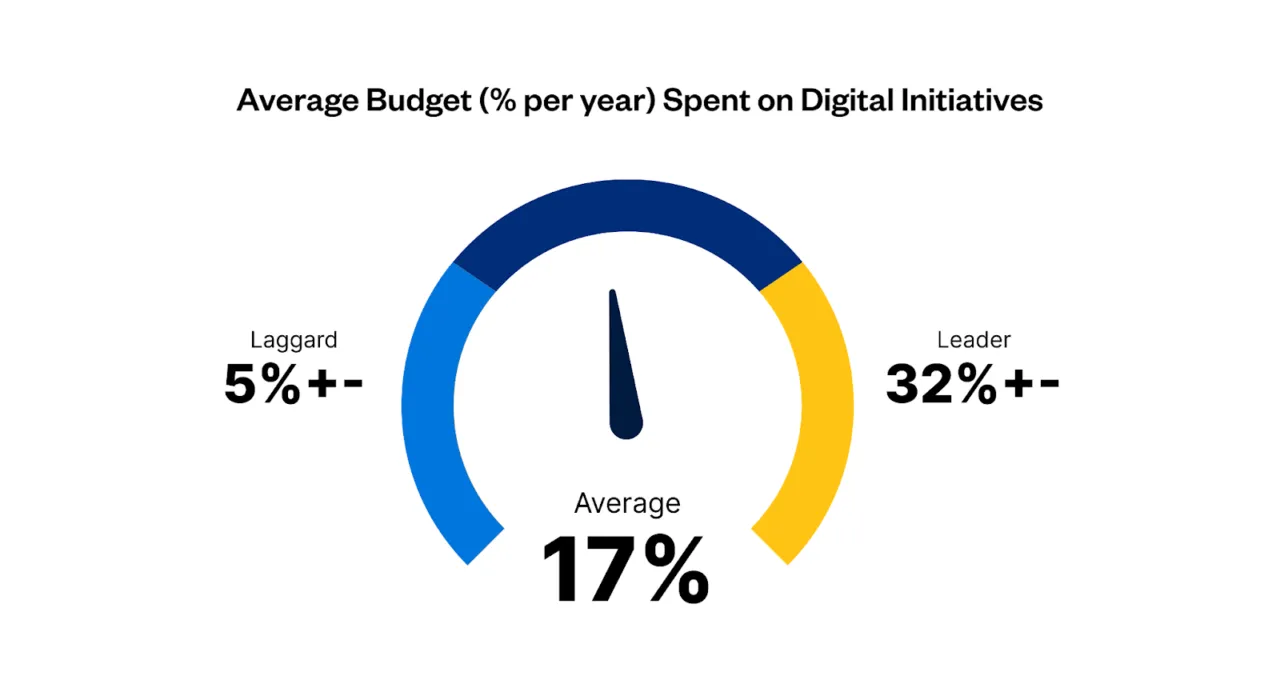Digital-Driven Transformation: A Practical Guide to Digital Technology Adoption for Small Business Success
In a time when small businesses face a myriad of challenges, from navigating inflation and rising interest rates to challenging supply chains, they stand as more than just the backbone of the economy. Small businesses are essential drivers of innovation, employment and vibrant communities. In order for small businesses to compete and grow in a challenging marketplace, they have to be digitally ready and able to evolve with the tech-driven expectations of today’s consumers. In doing so, they’re better equipped to meet current demands, withstand economic uncertainty and get on the path to growth and sustainable success.
What exactly does it mean to be a ‘digitally ready’ small business? It means embracing technology-based solutions that streamline operations and help connect with customers. It requires the agility to keep up with the ever-changing digital landscape. And it also means staying responsive to market trends, and leveraging tools and strategies that empower business resilience and success in our digital-first era.
The objective of this FreshBooks report is to offer a framework for small business owners to evaluate their business’ digital readiness. FreshBooks aims to equip owners with actionable insights that will inform their next digital investments, ensuring they can make smart choices that lead to sustainable growth and impactful outcomes.
The Digital Roadmap
To establish the framework for assessing digital readiness, FreshBooks conducted a survey of 1,000 small business owners across the U.S. and Canada. These businesses are as diverse as the communities they serve, representing sectors like financial services, marketing, healthcare, education, and various trades. Their teams range in size from solo operations to just under 40 employees, painting a comprehensive picture of small business across North America.
Our survey explored 10 distinct operational areas where digital tools can make an impact, which are illustrated in Figure 1. These areas were then grouped into 4 levels of priority, based on rates of adoption, costs and/or other barriers to entry, and the potential benefits and ROI to a small business. On one end are digital technologies that are relatively easy for small businesses to implement, and were shown to be widely adopted by the small business owners in the survey. At the other end are areas that may require more substantial investment but can offer high returns and competitive advantages.
How does your small business stack up in the digital landscape? Continue reading to see how you compare with fellow business owners across North America and gain actionable insights on elevating your digital maturity.

Priority 1: Table Stakes
Cost-Efficient, Straightforward Setup, High ROI, Essential for Modern Business
These areas were found to be ‘widely adopted’ by survey respondents. Only a small fraction (17%) lack digital billing capabilities, and just 15% do not currently offer a full mobile experience to their customers. In short, if your small business hasn’t implemented these digital solutions yet, you’re falling behind. These are predominantly customer-facing technologies, which meet the needs and digital experience expected by today’s consumer.
- Digital Billing & Invoicing: Streamlining your billing and invoicing digitally not only enhances efficiency but also provides a seamless and convenient experience for your customers, which can improve cash flow and reduce delays in payment.
- Central Financial Data with Payroll: Consolidate accounting, billing and payroll into one comprehensive platform for a 360 view of your businesses financial health. In five clicks, pay your team with unlimited payroll runs and automate payday with direct deposits, leaving behind complex workflows or app switching.
- Digital Payments Offering diverse digital payment options—from credit cards to mobile wallets—caters to customer preferences and speeds up transaction processes.
- Mobile Experiences: Being a mobile-friendly business, whether by having a responsive website or a dedicated app, simply isn’t an option anymore. Consumers increasingly interact with businesses through their smartphones, and not accommodating this can seriously limit a business’s reach and customer experience.
Priority 2: Low Hanging Fruit
Budget-Friendly, User-Friendly, High ROI, Essential for Competitive Edge
These options offer a compelling combination of low financial barriers and substantial opportunities for small businesses to not only digitize their operations but also establish themselves as digital innovators.
Despite their importance, our survey reveals only 41% of small business owners have a complete digital strategy or plan in place. And just 27% of owners said they’re experimenting with Generative AI within their businesses. Each of these options are recommended for small businesses, as they provide potential to gain a competitive edge, increase operational efficiency, and continually meet the needs of today’s digital-savvy consumer.
- AI: Accessible AI tools and services can empower small businesses to supercharge and automate various aspects of operations. Generative AI can be leveraged for a range of applications, like social and web content, customer communications or mapping out a timeline for a new product launch.
- Digital Plan, Strategy and Budget: Although it requires an investment of time, developing a digital strategy is low cost and invaluable. Important components of a digital transformation strategy for small business owners include a well-defined technology roadmap, a flexible approach to managing change, and continuous evaluation and adaptation. A well-crafted strategy gives a business a competitive edge, helping to allocate resources more efficiently and identify growth opportunities sooner.
Priority 3: Customer-Centric Digitization
Variable to Moderate Cost, Some Technical Setup, Substantial to High ROI
Finding, cultivating, and retaining customers is the lifeblood of small business success. Surprisingly, the majority of small businesses owners are not making full use of two of the most powerful customer focused digital technologies available to them. Our survey revealed that less than half (44%) of respondents have implemented a Customer Relationship Management (CRM) system. And just 39% have adopted or deployed Search Engine Optimization (SEO) or Search Engine Marketing (SEM) strategies to elevate their online visibility to potential customers.
Investment into these strategies can be significant, but small businesses looking to get a leg up in the marketplace should consider these tools to enhance customer engagement and boost overall market presence.
- Customer Relationship Management (CRM): A robust CRM system does more than just manage customer data. It provides you with a 360-degree view of your customer interactions, allowing for targeted marketing, improved customer service, and ultimately, a more personalized experience for your clients. Investing in CRM can significantly improve customer retention and boost revenue.
- Search (SEO/SEM): Effective Search Engine Optimization (SEO) can significantly improve your website’s ranking on search engines, making it easier for potential customers to find you. Meanwhile, Search Engine Marketing (SEM) allows you to specifically target customer segments through paid advertisements, delivering more immediate results. Both are key for driving traffic to your website, which can lead to increased conversions and revenue.
Priority 4: Digital Safety Nets: Risk & Reward
Substantial Cost, Essential for Scaling and Enhancing Customer Trust
While digital tools offer substantial benefits, they also pose new kinds of risks. It’s important to strike a balance by implementing digital safety nets that not only protect your business but also enable you to seize opportunities securely.
Our survey findings show that only 45% of owners are storing business information securely in the cloud. And just over half (54%) have secure tech and policies in place to protect business and customer data. While investing in digital security measures might seem costly, the potential financial and reputational damage from a data breach or leak of private customer information could be significantly more expensive and challenging to address.
- Cloud Storage: Using cloud storage and computing offers valuable benefits like scalability, flexibility, and remote access. On the other hand, it can introduce security vulnerabilities if not properly managed. It’s important to opt for cloud solutions that provide robust security features that minimize the risk of your business data falling into the wrong hands.
- Privacy/Security: Data breaches and cyber threats are increasingly common, so strong privacy and security measures are important for all businesses. Digital solutions range from implementing secure firewalls and encryption methods to maintaining up-to-date privacy policies. Investing in this area not only protects your business from potential financial and reputational damage, it also builds trust with your customers.
- Central Financial Analytics: Having a centralized system to keep tabs on money coming in and going out will give you a complete snapshot of your business health. With this info, you’re set to make smarter decisions on investments, what to pay yourself and when to hire new talent.
Time and Money: The Real-World Investment in Going Digital
What about the nuts and bolts; just how much time and money are small business owners investing in digital solutions?
When it comes to carving out time for digital initiatives, the landscape is quite varied among small business owners, as shown in Figure 2 and 3. Our survey showed that on average, owners dedicate about 20% of their working week to planning or advancing digital projects. Those at the forefront of digital transformation (a group we’ll refer to as ‘Leaders)’ were respondents who garnered top scores for overall digital readiness. Leaders spend upwards of 42% of their work week on these tasks. On the other side, the ‘Laggards’ (those who received low scorers in overall digital readiness) are significantly behind, investing a mere 5% of their time per week.
Investment in digital initiatives isn’t just a matter of time, it’s also a financial commitment. On average, small business owners are allocating 17% of their annual operating budget to fund new digital projects. Those categorized as ‘Leaders’ are dedicating 32% of their budget to digital advancements. The ‘Laggards,’ however, are trailing with a minimal 5% budget allocation toward digital initiatives.
Figure 2 and 3:


The Digital Road Ahead
Whether your small business is focused on marketing, construction, healthcare or interior design, understanding where you fit in the digital landscape is important for future growth and success.
To assess your business’ digital readiness, start by evaluating the tools and strategies highlighted across the priority levels in this report. Compare your practices with the survey averages to determine where you stand. Are you a ‘Leader,’ with substantial investments of time and budget in digital solutions? Or do you find yourself in the ‘Laggard’ category, with minimal commitment to digital growth?
“This report serves as an invaluable tool, offering insight into where owners stand in the digital landscape and how they can harness the power of billing, accounting, and payroll on FreshBooks’ comprehensive platform—a solution that evolves with their growing businesses” said Stefano Grossi, Chief Product & Technology Officer at FreshBooks.
The objective of this FreshBooks report is to offer a framework for small business owners to evaluate their business’ digital readiness. FreshBooks aims to equip owners with actionable insights that will inform their next digital investments, ensuring they can make smart choices that lead to sustainable growth and impactful outcomes.
Survey Methodology
FreshBooks designed and fielded an online survey of approximately 1000 small business owners from the United States and Canada. Participants were sourced via an online panel and represent a wide range of small businesses by industry, revenue and employment. The study’s margin of error is +/- 3.2% at 95% confidence.

Share: